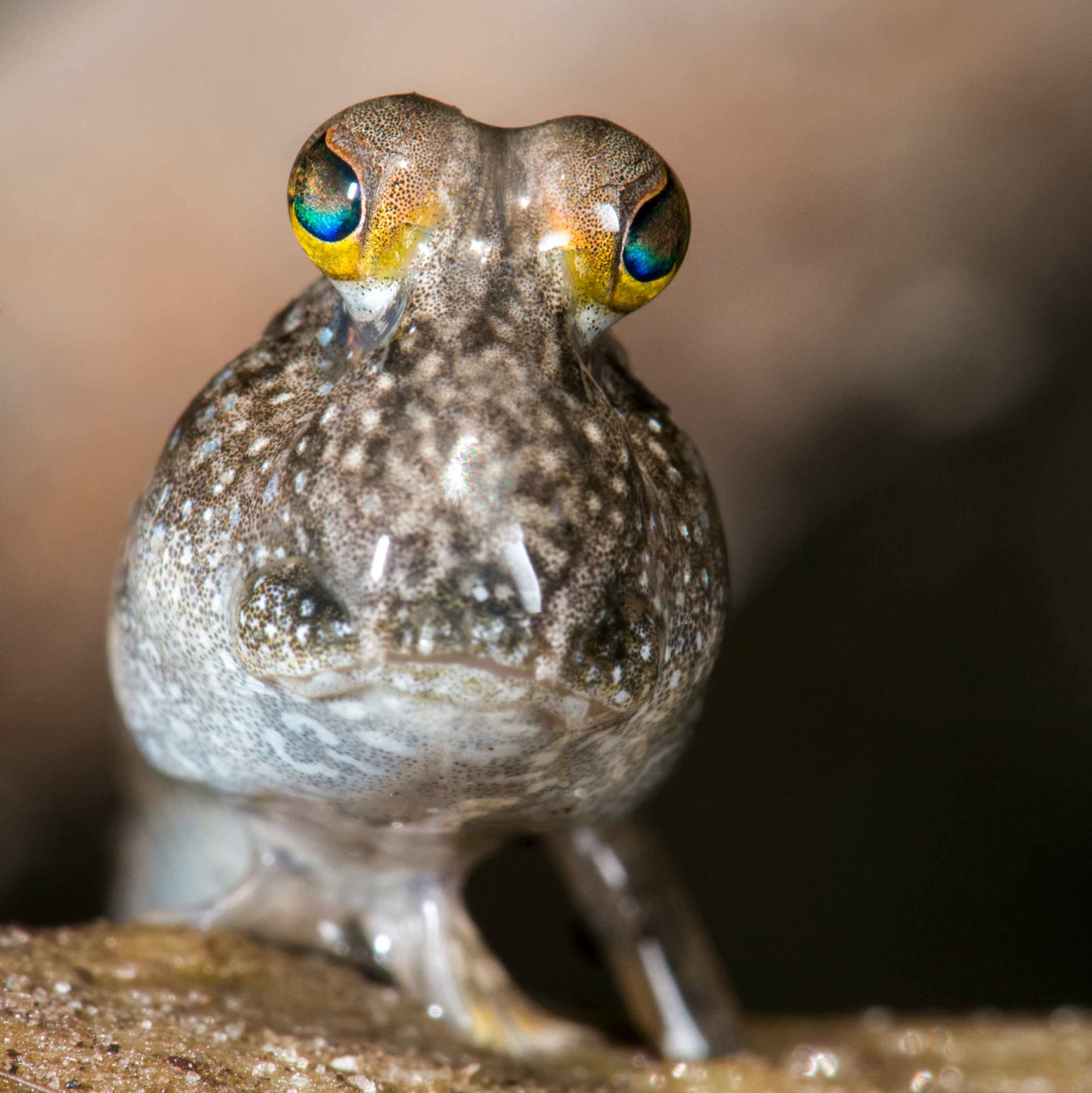 Listen to this article
•
15:34 min
Listen to this article
•
15:34 min
I will start by painting you a picture. You are alone by the ocean, enjoying the warm Vitamin D the rising sun softly showers on you. The water is as calm as a lake. You admire how the stillness is broken as a stone skips over the water.
Wait a minute; you never skipped any stones? What was it that just hopped along the surface of the water?
This is precisely how my first-ever encounter with a mudskipper (family Oxudercidae) unravelled.
Mudskipper. It’s the perfect name for a strange, beautiful creature that looks like it was drawn by a cartoonist first and then brought to life by evolution. It’s a marine fish that seems content living outside water. It climbs trees, hitches rides on snails, and rolls around in the mud.
There are over 30 species of mudskippers found across the Indian Ocean, but there are certain traits they all share. Large googly eyes that protrude from the head and a pair of pectoral fins that work like front legs are some of the numerous adaptations that have helped mudskippers take on an amphibious lifestyle. They can breathe, feed, socialise, and thrive on land so long as they are within reach of a little water or wet mudflats.

Cover Photo: A mudskipper on land will appear to be blinking regularly. What they are doing is wetting their eyes by immersing them into fluid-filled dermal cups. Cover Photo: Umeed Mistry
Mudskippers are thought to have first evolved approximately 140 million years ago, around the time Earth was seeing some of its first birds, flowers, and many other creatures whose descendants live with us today. We may never know what in particular made the ancestors of the mudskipper decide to move away from being full-time water animals. It is, however, generally understood that the early ocean teamed with a concentrated diversity of life, and the competition for resources and challenges for survival were becoming increasingly intense.
As this prehistoric marine animal gradually developed the ability to drag itself out of the water and breathe and see clearly when exposed to air, entirely new habitats and resources opened up for it. This adaptation was a game-changer for mudskippers and several other marine animals.
To remain flexible in their use of both land and watery habitats, mudskippers have retained gills to breathe when underwater, but they can switch to breathing through the linings of their skin, mouth, and throat when they emerge outside. A thin film of water on their body is always maintained and to ensure this, mudskippers will repeatedly roll sideways over wet mud.

Another important trait that has helped these finger-sized fish colonise land is vision. Not only can mudskippers see well above and below water, the positioning of (independently movable) eyes on the top of their heads gives them a panoramic view of their surroundings. This is a handy adaptation for fish that are exposed to both marine and terrestrial predators. Mudskipper anatomy has also had to solve for locomotion as terrestrial living rules out swimming. Pectoral fins in mudskippers have been modified to take the weight of their upper bodies, allowing them to walk, hop and jump on land as well as skip over the surface of the water when they need to make a run for it!
Mudskippers also evolved internal adaptations to tolerate some physiological constraints that would otherwise make surviving in the terrestrial world difficult. These include an improved immune system to fight off an entirely new set of pathogens and various mechanisms to increase their tolerance to ammonia. The latter is especially critical in the intertidal ecosystems they inhabit.
Life in the ocean’s intertidal zone can be pretty extreme, with fluctuating levels of water, oxygen, salt, and temperature. As the saying goes, the only constant here is change. As the water recedes for a few hours during the low tide, a patchwork of new ecosystems reveals themselves. These often include knee-high rocky outcrops that trap pools of water within them, flat expanses of sand or clayey mudflats, and intricate root systems of the magnificent mangrove forests. Mudskippers are busy in all these habitats. They only have a few hours until the next incoming high tide submerges their feeding grounds, and importantly, their social arena (where territorial disputes between males and courtship between mates take place).
Every high tide brings in water from the open sea, enveloping this world like a blanket. Several animals are unaffected by the change in the environment, but some, like mudskippers, go back into burrows in the submerged ocean floor, waiting for the next low tide to become active again.
Burrows are a crucial refuge for mudskippers who build elaborate tunnels, sometimes with multiple openings at the surface. Burrows allow them to hide from predators at high tide. In many species, burrows are also used for mating and brooding their eggs. Housing eggs in burrows is no easy task. With constantly depleting oxygen levels in the submarine tunnels, adults will routinely swim up to the surface to gulp a chamber full of air to reoxygenate their burrows.
If ever there was a heart-warming evolutionary story, for me, it would be the one about mudskippers. It’s all so fascinating: their transition to life on land, their multi-faceted adaptations to make the most of two completely different realms, their complex social behaviours. Many bewildering thoughts are sure to come to mind as you squat beside a group of mudskippers, watching them walk around on their crutch-like fins, looking for insects and fighting with one another over mates and boundaries. Mudskipper watching might just be the next big thing!









